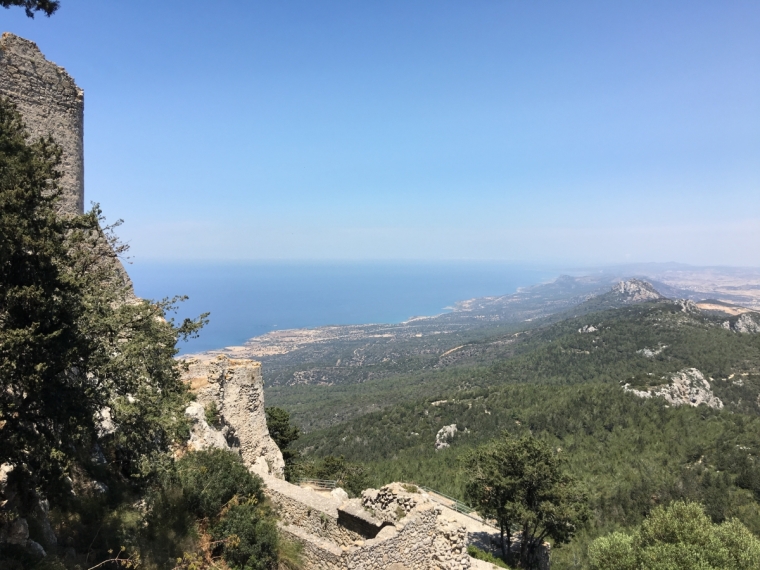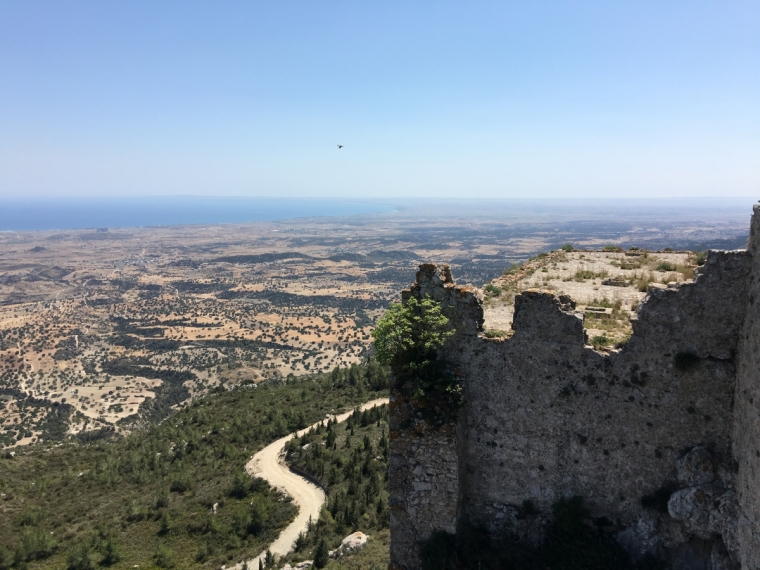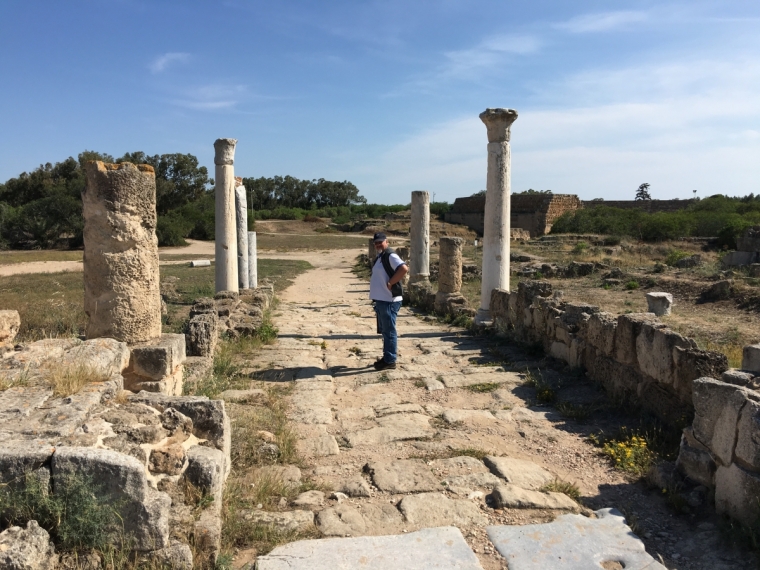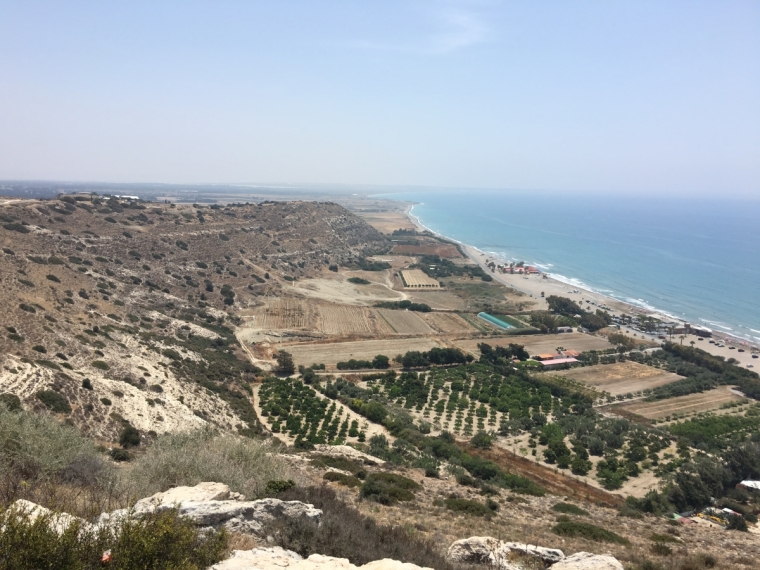THROUGH THE BIBLE: Saul transforms into 'Paul' to spread Gospel in Cyprus

Christian Examiner introduces a new series which allows readers to walk with Dr. Eric Mitchell, associate professor of Old Testament & Biblical Archaeology at Southwestern Baptist Theological Seminary, through some of the most important sites in the Bible. Mitchell directs the archaeological survey at Tel Gezer, an important Old Testament site. Mitchell's journal entries will help readers visualize important sites like Gezer, the places where Jesus walked, and the valley where David killed the Philistine Goliath.
SALAMIS, Cyprus (Christian Examiner) – Standing upon the mountaintop ruins of a crusader castle in northeastern Cyprus (Kantara), I could see the snowcapped peaks of the Taurus Mountains in Turkey across the Mediterranean sea to the North.
In fact, I could see so much of the coastline of Turkish Cyprus that I felt more like I was looking at a satellite image.
To the northeast the finger-like peninsula points across the sea toward Syrian Antioch, the location from which Paul was sent out on his first missionary journey to Cyprus (ca. AD 47/48). The startlingly rich azure blue of the sea amazes – especially for one living six hours from a coastline in my native Texas.
To the South, I could see the bay and coastline of eastern Cyprus that has been a harbor for trading ships for thousands of years. It was in this bay, at the ancient city of Salamis, that Paul landed with Barnabas and John Mark in order to spread the Gospel of Jesus Christ to the people here.
The island of Cyprus has been occupied since 10,000 BC. It was colonized by Mycenaean Greeks in the mid-second millennium and later by Phoenician traders who established colonies there. In ancient times, it was ruled by foreign powers such as Assyria, Egypt, Persia, Alexander, and the Romans.
During the Crusades, Richard I of England conquered it and sold it to its eventual owner Guy of Lusignan. After the Lusignan dynasty faded, the city of Venice annexed and controlled Cyprus beginning in 1489.
The Ottomans conquered Cyprus in 1570 and the British took it over in 1878. The modern political framework of Cyprus became reality when it became independent in 1960, after which a military coup by Greek Cypriots wishing to unify with Greece led to Turkey invading to protect Turkish Cypriots and their rights. The northern half of the island was occupied by the Turkish military and it declared independence. Since then, the country has been divided but talks are now under way toward reunification.

I traveled to Cyprus to visit my colleague Dr. Tom Davis, who directs excavations of a Roman/Byzantine site at Kourion, Cyprus. Driving through both Southern (Cypriot) and Northern (Turkish) Cyprus, I found beautiful scenery, fine food, and kind people everywhere I went. Tom graciously hosted us and drove us furiously up the single lane twisting mountain road to the top of the mountain and the crusader fortress at Kantara. My heart in my throat, I cringed at the speed, switchbacks, and sudden appearances of oncoming vehicles, but I was awed by the increasingly majestic view.
Why is this place so important for the study of the Bible?
The answer is simple. Prior to Paul's first missionary journey, the Apostle James – brother of John – had been beheaded by Herod Agrippa I (grandson of Herod the Great, who himself died soon after; see Acts 12, and Josephus, Antiquities).
A world-wide famine had been revealed to the church at Antioch through the prophet Agabus (Acts 11:28). This prophecy led to Paul's earlier trip with Barnabas to Jerusalem to send aid to the church there to forestall the effects of this upcoming famine.
The famine came about through a devastating Nile flood in AD 45. This flooding led to a drastically reduced grain crop and doubled grain prices; and it resulted in famine and starvation across the Roman Empire, especially among the poor.
It was in Jerusalem on this benevolence trip that John Mark joined Paul and Barnabas (Acts 12:25).
Paul, as many know, was a Jewish convert to Christianity who was from Tarsus in Asia Minor (modern Turkey).
Barnabas, a nickname ("son of encouragement") given to a man named Joseph, was also a Jewish convert to Christianity and he was from Cyprus!
John Mark, cousin to Barnabas (Col. 4:10), was also a Jewish convert to Christianity and, as tradition holds, the author of the Gospel of Mark.
When Paul, Barnabas, and John Mark landed at Salamis, the early church was under persecution and difficulty. From Salamis they traveled along the southern coast (perhaps with some inland forays) all the way around to the west – to the city of Paphos, where the Roman proconsul/governor of Cyprus resided.

It was at Paphos that these missionaries found a shift from the eastern/Hellenistic culture from whence they came to a more predominantly western/Roman culture.
In response to this shift in ministry to western Gentiles, Saul began to use his western, personal name, Paul, and was never mentioned by his Jewish name again in the New Testament (see Acts 13:9; Saul's name was not changed by the Lord at the time of the Damascus Road experience, or any other time, as some conjecture).

Tom Davis holds that this early mission team may have originally been headed toward Alexandria, for Paphos was the port from which one would typically sail south to Egypt. However, after the conversion of the Roman proconsul, Sergius Paulus, they sailed north to Perga in Asia Minor (Turkey) where Mark left them to return home to Jerusalem (tradition holds that John Mark was the first to evangelize Egypt).
It may also be that Sergius Paulus gave them letters of introduction to his family who (according to an ancient inscription) came from Pisidian Antioch and he may have even given them an imperial vessel to travel in. If so, these would have helped Paul and his team get started in Asia Minor.

Of course, Barnabas and John Mark returned to further evangelize Cyprus (Acts 15:39). The 4th and 6th century A.D. basilica churches at Salamis, and elsewhere, reflect the spread of Christianity on Cyprus.
At Kourion, a basilica church and the home of Eustolios reflect a Christian presence on the southern coast of Cyprus. Eustolios built a villa and public baths in Kourion in the fifth century A.D. with many mosaics some of which contain Christian symbols (crosses, fish, etc.) as well as an inscription mentioning these "signs of Christ."
Dr. Eric Mitchell covers Bible Backgrounds for the Christian Examiner. He is Associate professor of Old Testament & Archaeology at Southwestern Baptist Theological Seminary in Fort Worth, Texas, and directs the Tel Gezer Regional Survey Project in Israel.